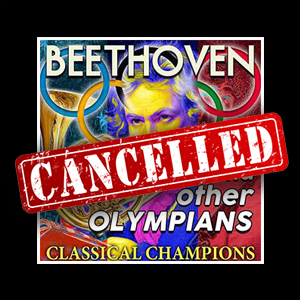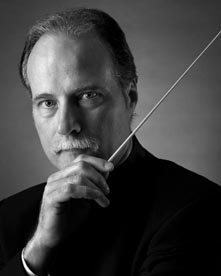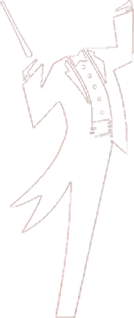
Message on Symphony of the Hills Concert #5
Beethoven and Other Olympians
Thursday, April 23, 2020 7:30 p.m.
In response to the continuing expansion of COVID-19 and to national and local directives regarding appropriate response to the virus, the Symphony of the Hills is cancelling its final concert of the 2019-2020 season. Though we deeply regret cancelling what was to be a tremendous season finale, the health of our musicians and our audiences take first place in our considerations. On that point, we are united as a people.
Our performers, in many cases, have provided joy for us all for five, ten, even fifteen years and more. This is a difficult time for them. The SOH is placing the income from concert ticket sales in a fund that will be distributed to these performers to mitigate lost income. At the same time, we realize many of our ticket holders may also find themselves in extenuating circumstances. If you feel the need to receive a refund for your ticket purchase, please make that request no later than April 23rd (the date of the concert) by either calling (830) 792-7469 or emailing info@symphonyofthehills.org.
We make this announcement with sorrow, but music goes on. Be on the lookout for word about the fabulous 20th anniversary season of the Symphony of the Hills which will be shared with you in the coming weeks!
The Olympic Spirit
John Towner Williams (1932 – )
Concertstucke (4 horns & orchestra)
Robert Alexander Schumann (1810 – 1856)
Symphony No. 7, Op. 92
Ludwig von Beethoven (1770-1827)

Gene Dowdy
Conductor & Artistic Director
Conductor’s Letter
Dear Symphony Friends,
Our final concert of the 2019-2020 season will showcase the music of Ludwig van Beethoven, with an interesting connection between the heroic nature of music and the extraordinary feats of Olympic athletes. If you are a musician, or ever studied music, you may remember the hours of practice required to excel; or, perhaps you wanted to put in more practice time, but other commitments arose…either way, the strenuous regimen of professional musicians is indeed heroic, and evocative of an Olympian. With the Olympic games to be held in Japan during the summer of 2020, this performance is dedicated to our musical and athletic heroes on and off the field.
We open with John Williams’ iconic fanfare from the 1988 Summer Olympic Games. Great composers are much like Olympic athletes in that they must compete on a regular basis to achieve fame and please their attentive fans. Robert Schumann wrote his Concert Piece for four horns and orchestra as a testament to the robust sound and heroic character of the French Horn, known simply as the horn. We are tremendously honored to bring you the four horns from the San Antonio Symphony as soloists: Jeff Garza, principal, and Peter Rubins, along with the rest of the section will absolutely bring down the house on the Schumann, a rarely performed and yet highly esteemed masterwork of classical music. Beethoven, arguably the most famous orchestral composer of all-time, wrote his 7th symphony in a joyful and spirited mood. We close the concert with Beethoven Symphony No. 7 in A Major, one of the most joyful and uplifting works of this heroic composer.
We hope this season offers you an opportunity to be at each of our concerts.
With sincere thanks for your support,
Gene Dowdy, Conductor & Artistic Director
Concert Notes
The thrilling music of tonight’s concert will fill us with musical memories to last us through the summer. It’s not a stretch to say that the musical performance this evening will be of an Olympian dimension. The orchestra will be delighting us with the divine sound of the brass section, so important to majesty and brilliance. It will certainly put us in a proper mood for the Summer Games in Tokyo. And we all should leave here this evening realizing once again our blessings.
The Olympic Spirit
John Towner Williams (1932 – )
Of course, we are all familiar with John Williams, 87 years old and still very active in the music scene. William’s music is ubiquitous in our cultural environment of movies and video. To review what we stated earlier: he is probably the most well-known and certainly the most celebrated composer in the U. S. (and he’s not done yet.) He has received five Academy Awards, four Golden Globes, and 22 Grammys, and was the recipient of the Kennedy Center Honors in 2004. He has composed some of the most popular and recognizable film scores in cinematic history, including the Star Wars series, Jaws, Close Encounters of the Third Kind, Superman, E.T., the Indiana Jones series, the first two Jurassic Park films, Schindler’s List, and the first three Harry Potter films. Tonight, we will be treated to music we first heard when we tuned in to the 1988 Olympic coverage by ABC.
Concertstucke (4 horns & orchestra)
Robert Alexander Schumann (1810 – 1856)
Another great composer of the Romantic era was Robert Schumann, an influential contributor to the body of music of this period. Schumann left the study of law to pursue a career as a virtuoso pianist, with the assurances of his piano teacher that he could become the finest pianist in Europe. Sadly, a hand injury ended this idea, so Schumann focused his energies on composing. Until he was 30, Schumann wrote exclusively for the piano. Subsequently, he composed four symphonies, one opera, and numerous other orchestral, choral, and chamber works.
Fifty years ago a performance of this composition would have been a rarity because so few American orchestras could field the horn section required. For sheer exuberance the music is unequaled—we can imagine Schumann running into the rehearsal room and exclaiming excitedly, “Hey, guys, look what we can do with these new valved horns!”
Symphony No. 7, Op. 92
Ludwig von Beethoven (1770-1827)
Almost 300 years after Ludwig von Beethoven’s most creative period (about 1841-49,) he remains among the most recognized and influential of all composers. His compositions include 9 symphonies; 5 piano concertos; 1 violin concerto; 32 piano sonatas; 16 string quartets; a mass and an opera. On any given day throughout the Western world, a classical concert performance will include one of his creations.
Beethoven died in 1827. By that time all nine of his symphonies had been performed as far west as London. The U. S. was a different story. There were several eastern cities with accomplished orchestras, e.g. Boston and New York, yet none of the Beethoven symphonies except the 1st was performed in its entirety in America until 1841. The fledgling New York Philharmonic debuted in 1842 with the Fifth Symphony. Beethoven’s Seventh Symphony helped launch the Orchestra’s second season in 1843 and the Philharmonic was well on its way.
Symphony No. 7 was Beethoven’s last work for quite a few years. It is such an outstanding piece, it must have exhausted him. It manifested the “big style” that he had been cultivating since the early 1800s. The concert in which this work premiered—a benefit for Austrian and Bavarian soldiers wounded at the then-recent Battle of Hanau—was probably the most wildly successful of his career, understandably so.
The 7th is sneaky . . . it lulls us with a slow introduction, first A major, then C major (the gently lyric oboe tune), then F major (the same tune on the flute) with some exciting pulses. Beethoven seems to have had the aim to draw attention not only to the key emphases with shifts but also to new harmonic areas . . . every one of the piece’s themes is foreshadowed here. The material is surprisingly (for Beethoven) simplistic. Gradually, with some suspense, Beethoven draws out the first movement, then propels us with fierce energy through one of those movements of his that are dominated by a single propulsive rhythm.
There is no slow movement in this symphony. The 2nd movement (Allegretto) that audiences traditionally like so much is relaxing only by comparison with what comes before and after. It has a pleasant, muted beat. A subtly unstable wind chord begins and ends the movement. When we first hear it, it sets up the music of the lower strings; when it reappears at the end, it is an eccentric opening for the explosion of the 3rd movement, the scherzo.
The 3rd movement is fast but doesn’t sound hurried. The American conductor Toscanini pushed the passages of the 3rd movement strikingly faster than his colleagues, but there has been some debate about Beethoven’s original tempo ideas. Conductors, critics, and others have continued to argue about just what Beethoven wanted. In any case, the theme moves along like a superbly controlled machine.
The 4th movement (finale) seems even faster, with a “galloping” character, but the sense of pace is quite different from the 3rd movement. The finale carries through to a dizzying climax, unimagined before Beethoven’s day and rarely reached since a truly wild and swirling motion insinuated in the first movement. Here, too, Beethoven builds upon an obsessively repeated bass—just a pair of notes grinding away, working its way down through chromatic degrees until reaching the dominant key of E, and its neighbor, D-sharp, the inspired and mad process being spread across fifty-nine measures. Of course, even if it’s wild it must be orderly, and rhythmic definition is everything. That’s true here as in the notoriously difficult first movement.
Beethoven is reported to have experienced hearing loss in 1798 induced by a seizure, causing him to fall. When he recovered, he found that he had suffered some hearing loss. His hearing never fully recovered and was further impaired by a severe form of tinnitus. Amazingly, he continued to compose some of the best music of all time. As one Beethoven aficionado wrote of his Symphony No. 7: “Beethoven rose from the grave, slapped me awake in the middle of the night and brought me here.” Indeed.
Concert Notes by Jim Adams


